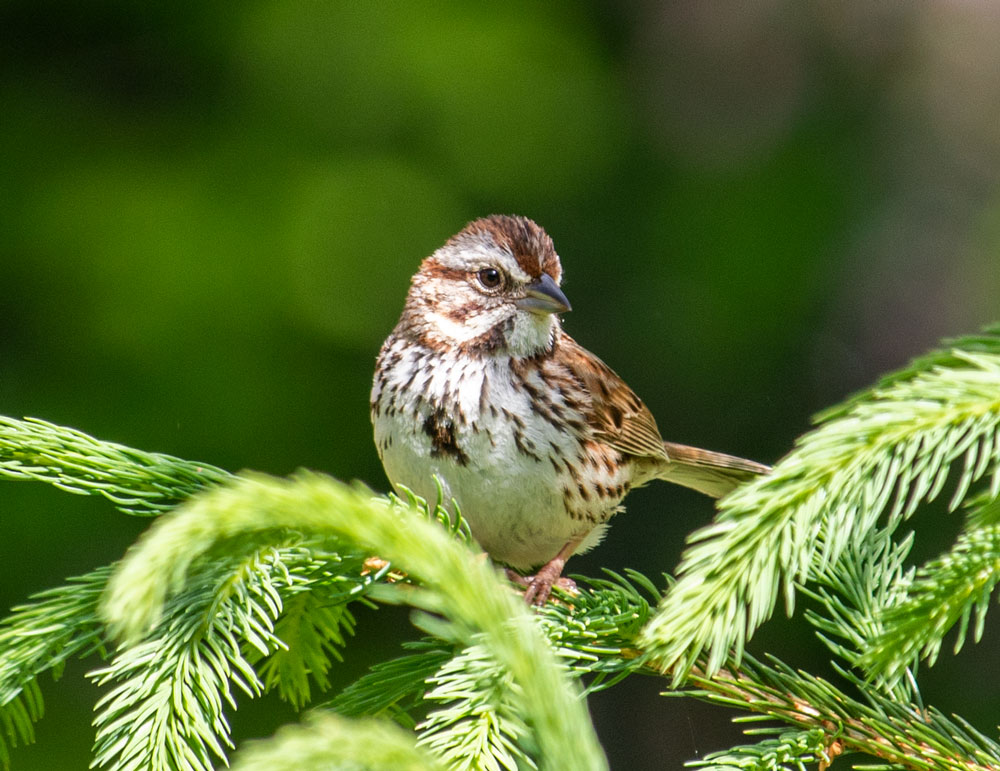
The song sparrow derives its name from its colorful repertoire of songs. These birds are one of the most familiar types of sparrows in North America. They are easily one of the most abundant, variable, and adaptable species of sparrow and interestingly enough can look much different in different areas of the country. Even though they can vary in appearance they do in fact share the same beautiful song.
I would like to share a few interesting facts about the song sparrow Melospiza melodia as well as a few photographs that I have taken of this spirited bird.
Song Sparrow Facts:
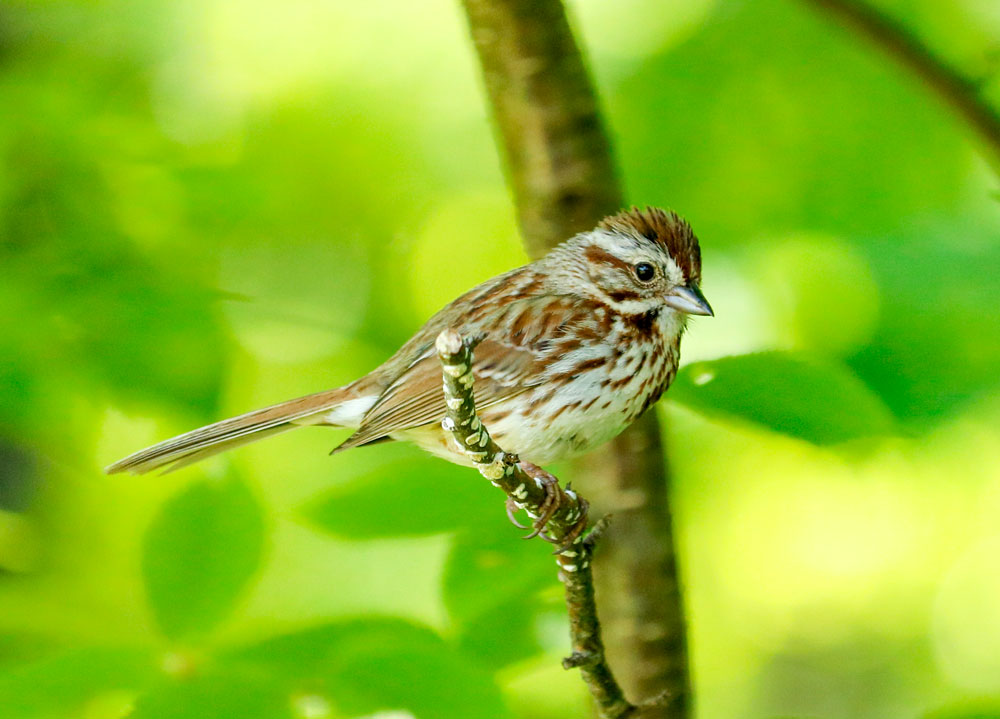
Song Sparrow Symbolism
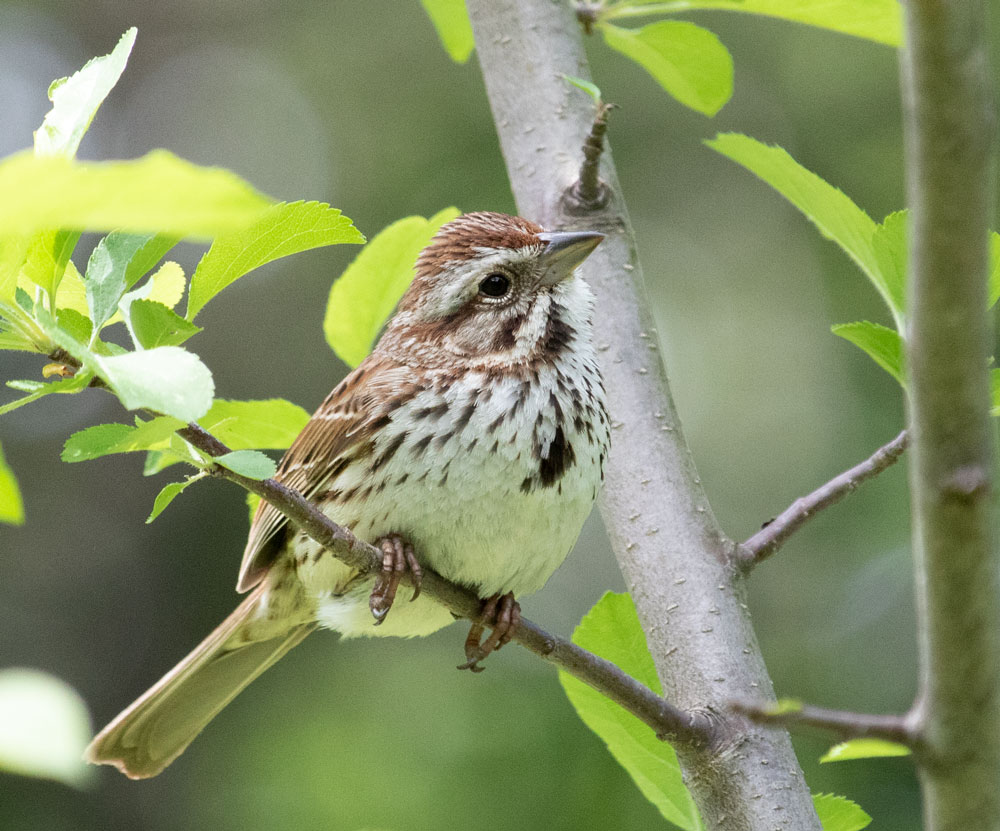
For the most part, sparrows symbolize an embrace of a simpler life. For example, quit focusing on short-term avenues of self-indulgence and think more long-term. In short, the sparrow can represent the need for you to develop an outgoing personality and it’s okay to start out small. Taking baby steps is the best.
Appearance
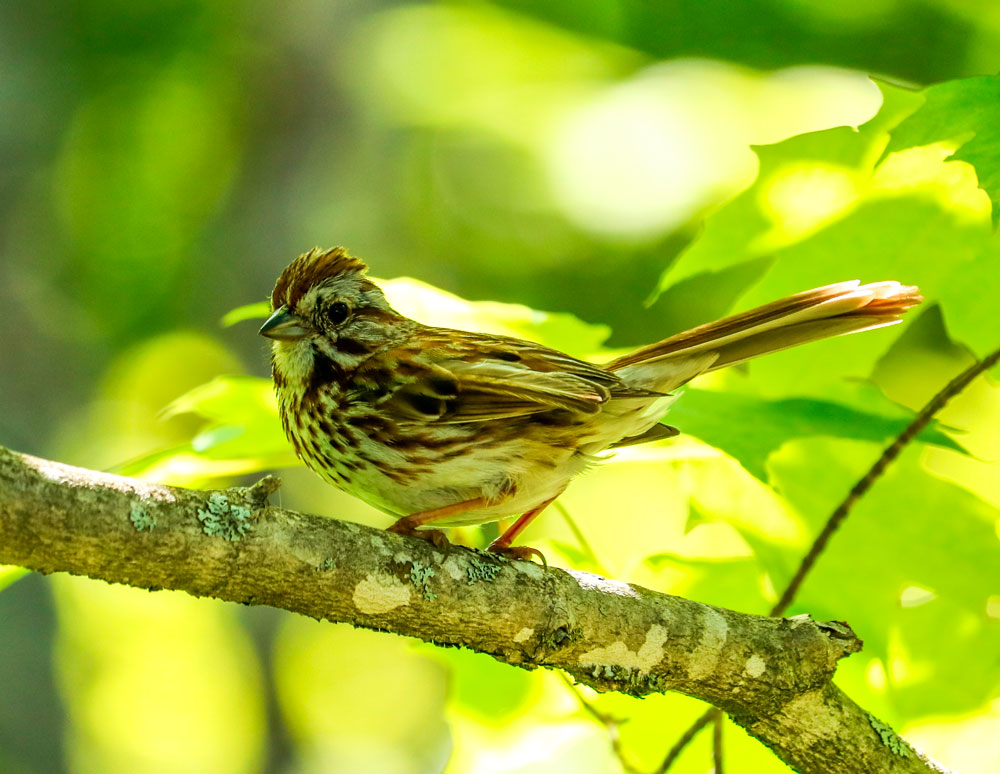
Song sparrows are medium-sized and fairly bulky. For a sparrow, the bill is short and stout and the head is fairly rounded. The tail is long and rounded, and the wings are broad.
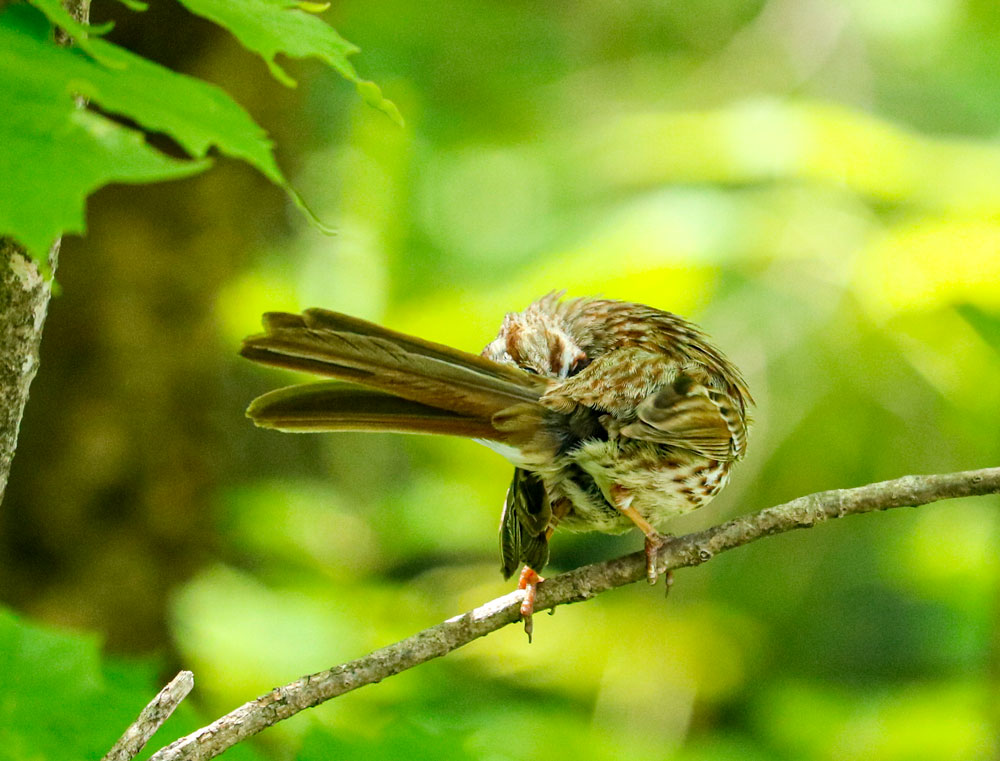
They are streaky and brown with thick streaks on a white chest and flanks. Upon closer look, the head is an attractive mix of warm red-brown and slaty gray, though these shades, as well as the amount of streaking. As mentioned above, this will vary greatly across North America.
Habitat
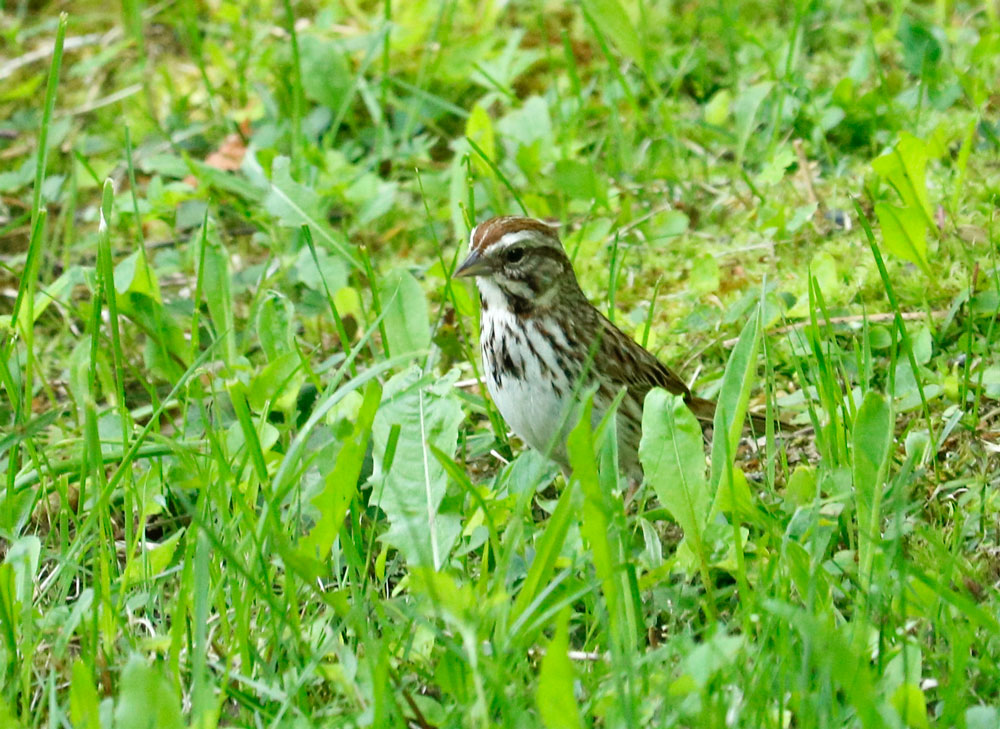
Song sparrows can be found in nearly any open habitat, including marsh edges, overgrown fields, backyards, desert washes, and forest edges. These birds commonly visit bird feeders and will build nests in residential areas.
Diet
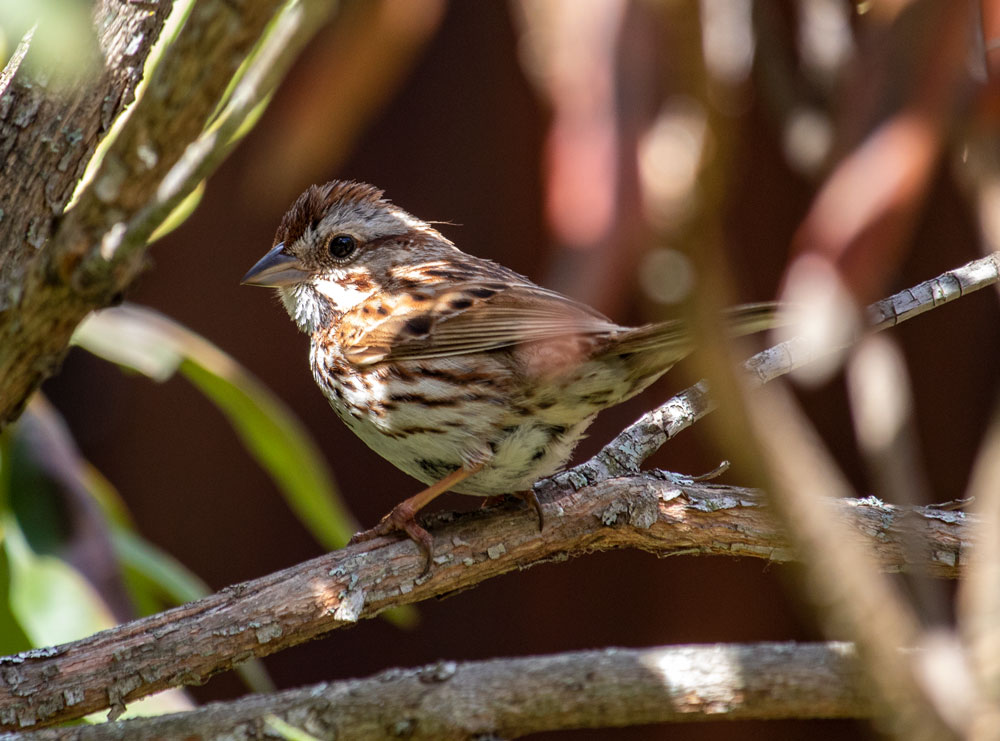
Typical of the sparrow family, song sparrows eat insects and seeds, with a greater proportion of seeds in the fall and winter, and a greater proportion of insects during the spring and summer months.
Songs & Calls
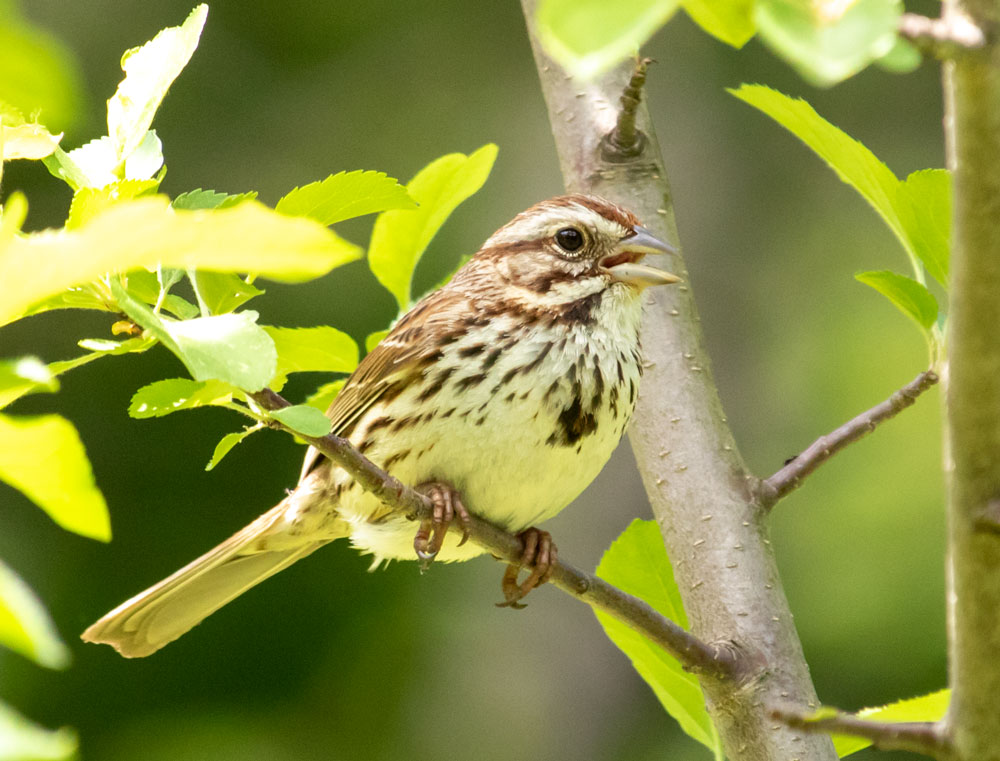
The song sparrow sings a loud, clanking song of two to six phrases that typically starts with abrupt, well-spaced notes and finishes with a buzz or trill. In between, the singer may add other trills with different tempo and quality. The song usually lasts two to four seconds. The patterns of songs vary over the species’ enormous range, so the birds that you hear when traveling may not sound quite like those from your own area.
These birds have a sharp chip note to indicate alarm or anxiety; both sexes make it when excited or if predators approach their nests and fledglings. Females make a harsh chatter at their mates during nest-building, or at a female intruding on the territory. Young or subordinate birds make a softer, note.
Behavior
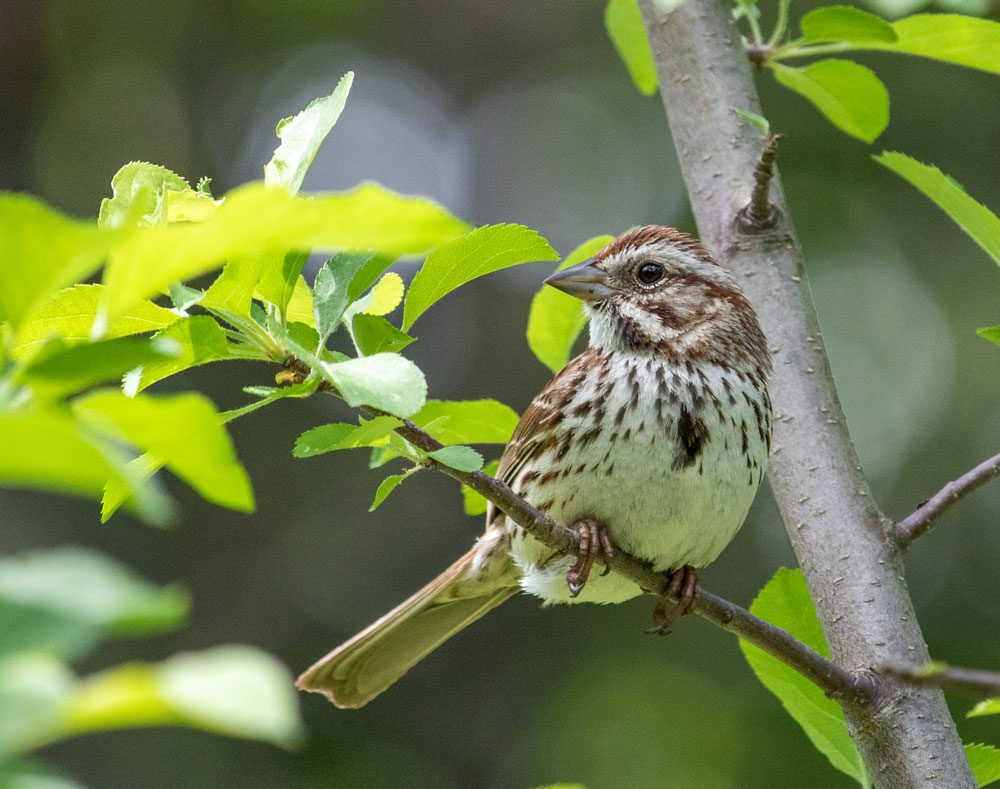
Song sparrows are solitary and highly territorial during the breeding season but are found in loose flocks during migration and winter. They forage mostly on the ground, sometimes scratching the soil. They will come to bird feeders with good cover close by. These birds sing almost all year and respond to pishing. This refers to a type of bird call that birders use to attract small birds. Once the birds are close enough, the birders can get a better view and identify them. Pishing is a useful technique for birders to master. Especially for bird photographers!
Breeding & Nesting
Song Sparrow nesting territories are often small, so nests may be close together resulting in high densities. Nest sites are highly variable, usually on the ground under a clump of grass, or in a shrub within four feet of the ground. In marshy areas, nests are often over water. The nest, built by the female, is an open cup of weeds, grass, leaves, and bark, lined with fine grass, rootlets, and hair. Nest materials will vary greatly depending on what kinds of materials are available.
They have one to seven broods and typically have four, often three to five, rarely two to six eggs per clutch. The eggs are pale greenish-white, heavily spotted with reddish-brown in color. The female incubates the three to five eggs for 12 to 14 days. Both parents feed the young, which leave the nest at 10 to 12 days. Young birds will stay near their parents for another three weeks until they learn to fly well and can find their own food.
Of the many species of birds that visit the yard, I often find the song sparrow to be the most amusing species of bird to watch during the breeding season. They start out frequenting the backyard and the feeders; then use the spirea bushes for building their nests during the breeding season. Being that their nests are often located in the front of the house, we are often scolded by these birds as we come and go out of the front door. They can also be found on the roof of the house as they sing during the early part of the morning. They choose to do this as we are still sleeping of course! They also keep a close eye on their fledglings as they get used to exploring their surroundings on their own. The parents are quite vocal and let us know when we are getting too close to their young.
Here are a few photographs of a few of our visiting song sparrows they’re young from this spring and summer.
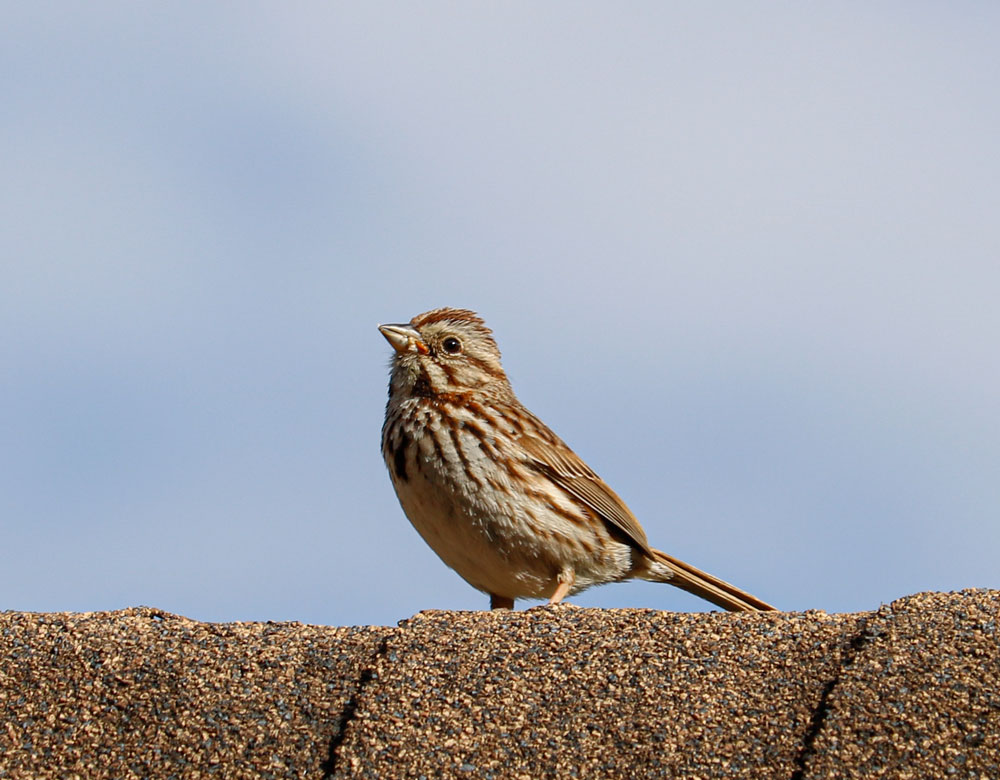
A song sparrow watching over its young from the roof with food for them.
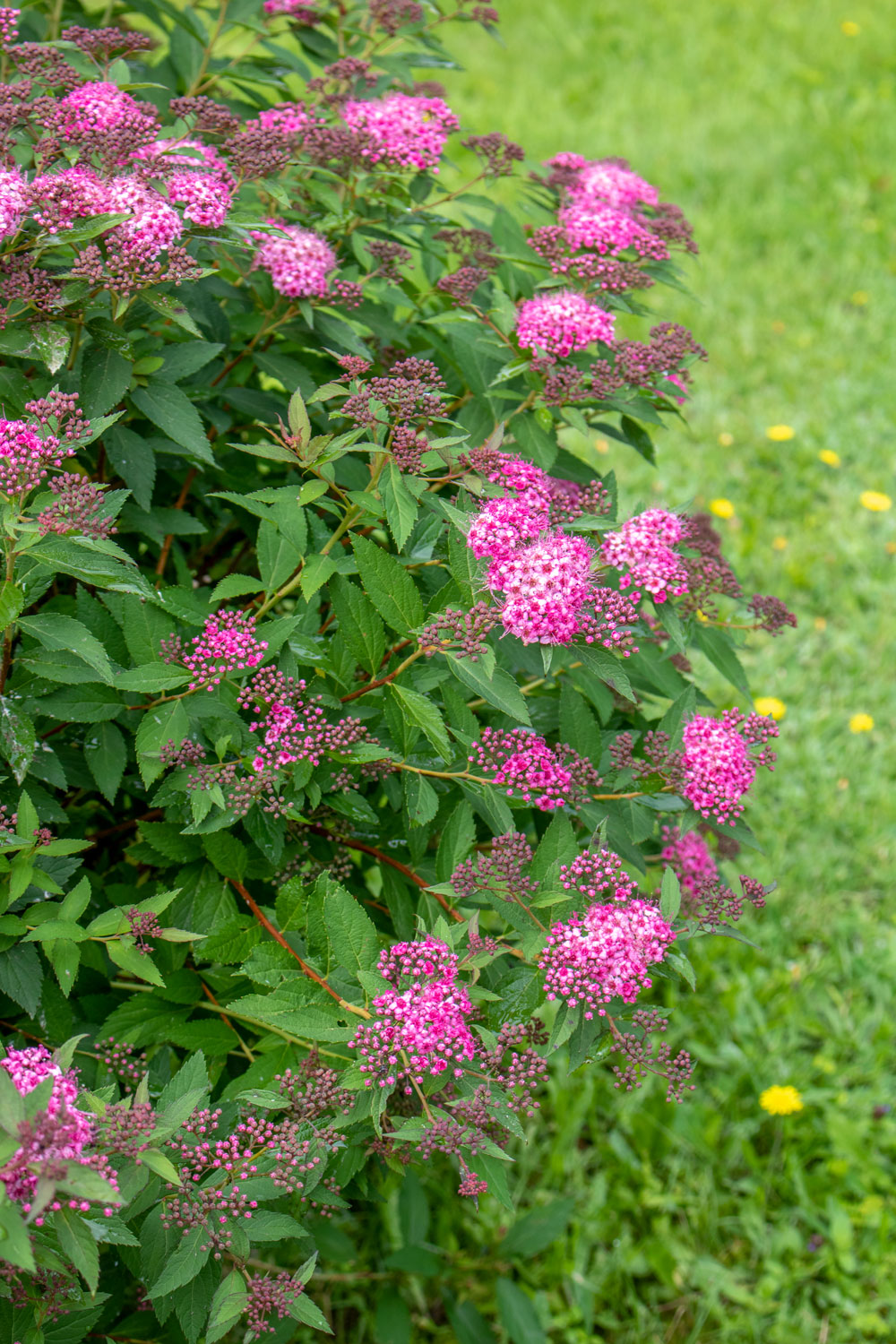
A spirea bush Rosaceae in the frontyard.
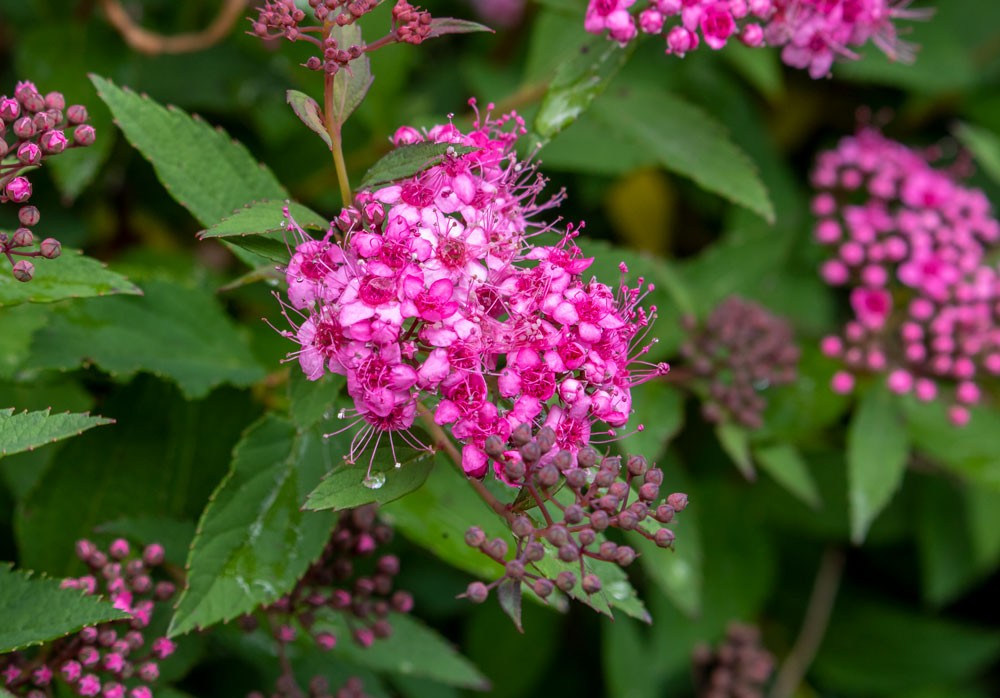
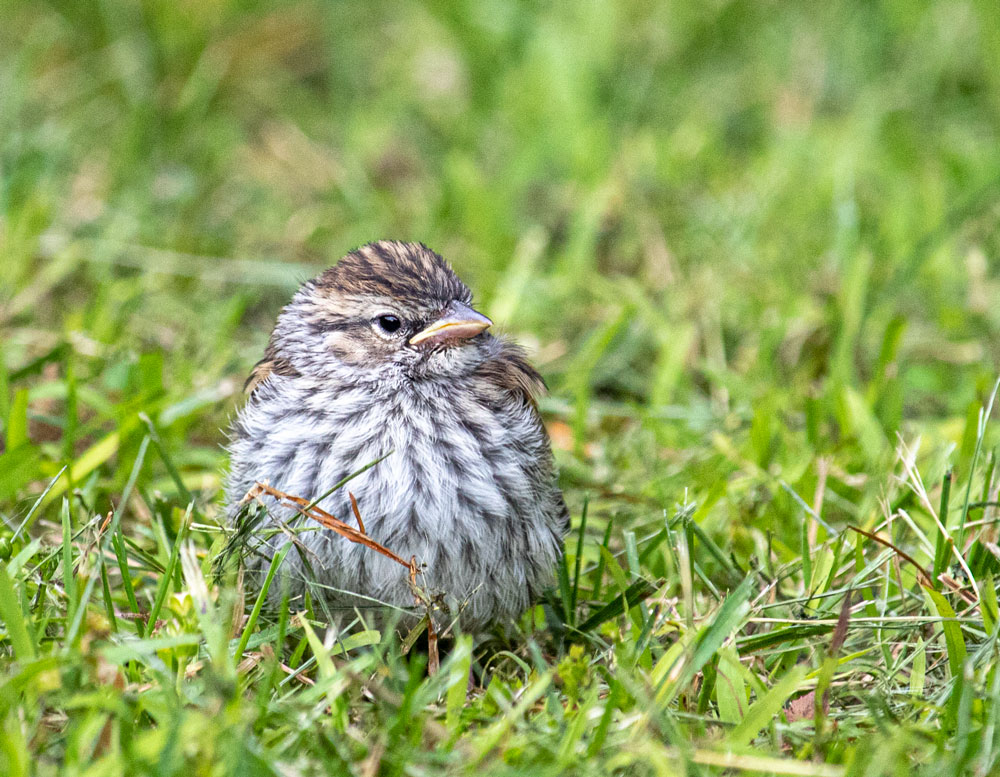
A young song sparrow learning to survive in its surroundings.
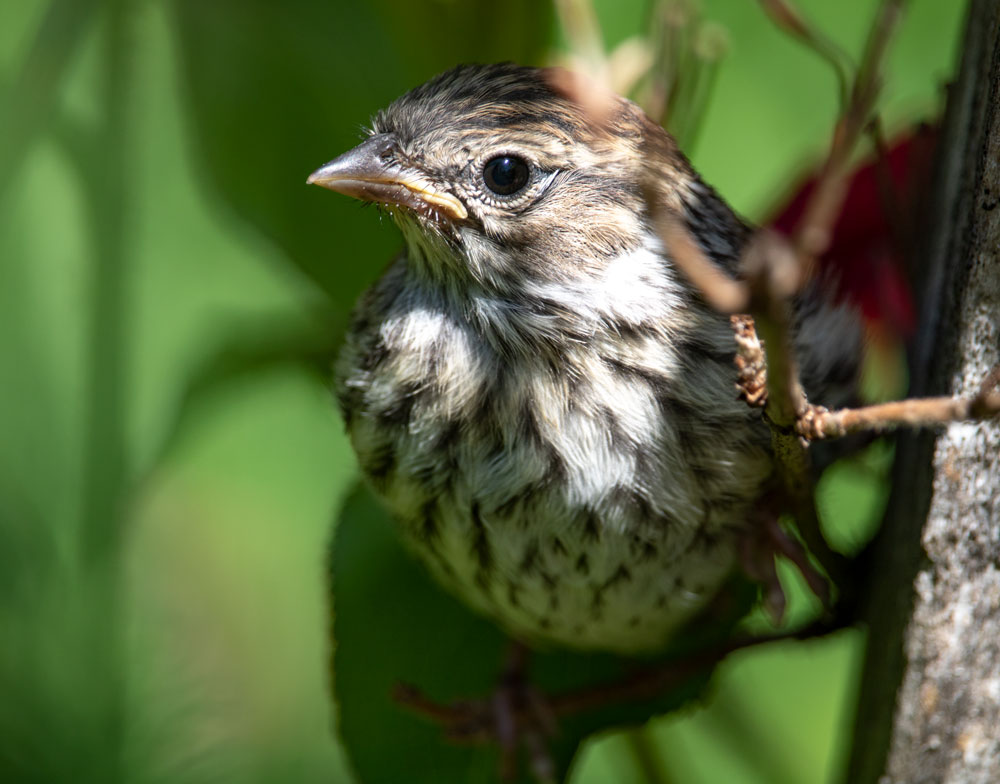
A young song sparrow waiting for its parents to come back.
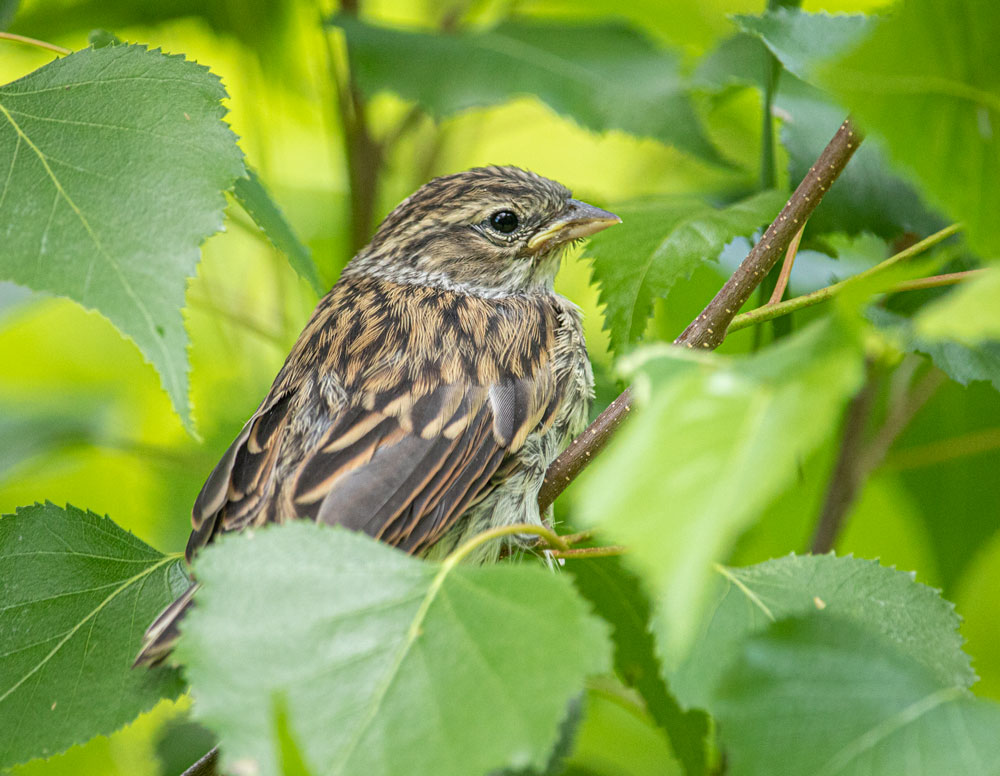
A perching juvenile during this spring.

One of the first song sparrow juveniles from the breeding season.
Migration
The song sparrow is a resident to a medium-distance migrant. The birds from far Alaska and northern Canada migrate the farthest, flying to the southern United States and northern Mexico to winter. Birds from the northern U.S. may migrate, but typically don’t go as far south as the birds that started from farther north, this is a pattern called “leapfrog migration.” This is an unusual migration pattern in which a more northerly group during the summer, migrates beyond another group, to become the more southerly group during the winter.
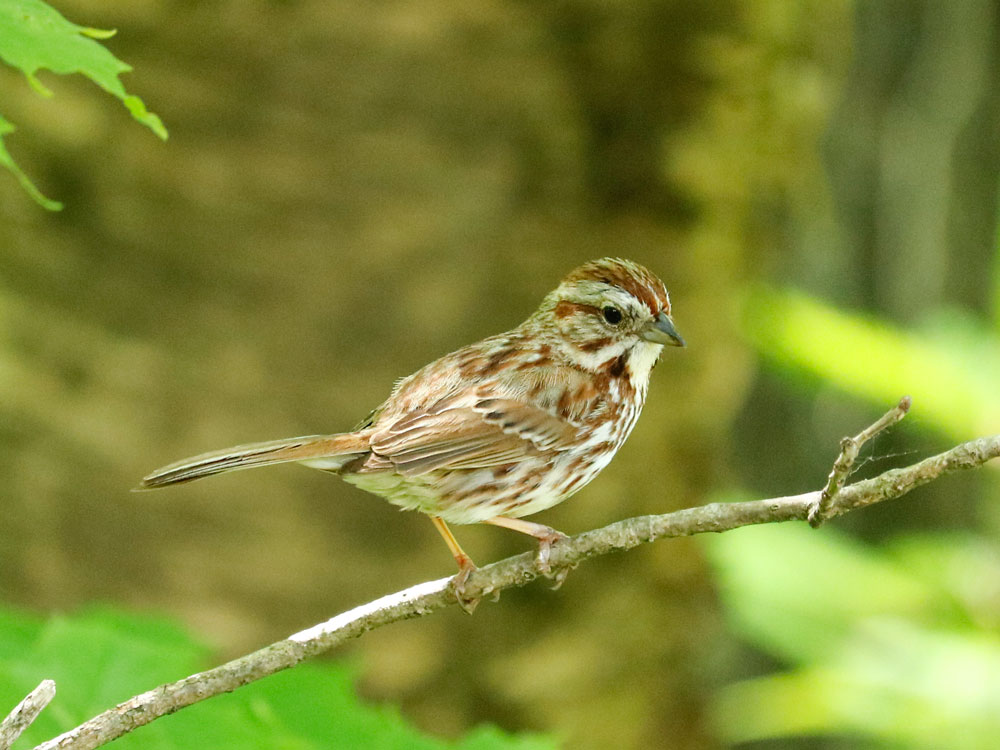
Thank you for reading and I hope you enjoyed learning about these songful birds. If you have anything to share, such as your photographs and experiences with these birds, please feel free to leave a comment below.
Resources used for this post:
allaboutbirds.org & audubon.org
Leave a Reply